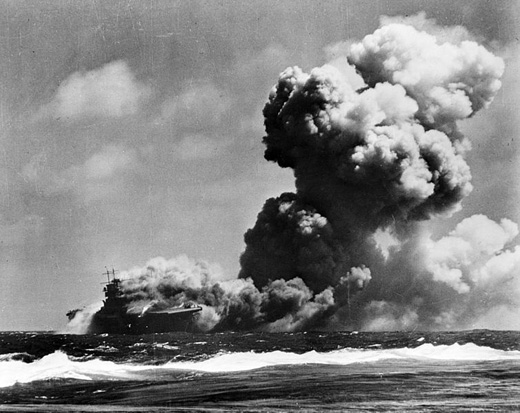USS Wasp Ablaze

On September 15, 1942, a powerful task force of US naval vessels steamed towards Guadalcanal Island in the South Pacific. Consisting of the aircraft carriers USS Wasp and Hornet, the battleship USS North Carolina and ten other vessels, the task force intended to land a regiment of US Marines on Guadalcanal to reinforce the US troops already vying for control of the island. As mid-afternoon approached, a Japanese submarine, I-19, maneuvered within firing range of the squadron and loosed a volley of six torpedoes at the Wasp. Despite attempting to outmaneuver them, three of the torpedoes slammed into the Wasp while a fourth missed and struck the North Carolina. A mighty conflagration quickly ensued as the torpedoes had detonated close to the ship’s fuel stores and magazines. Damage control efforts and maneuvering into the wind proved fruitless and within 35 minutes of the torpedo strikes, the order for abandon ship was given. When the Wasp finally slipped beneath the Pacific Ocean’s waves, 193 souls followed her leaving approximately 1900 survivors with 366 of them wounded.
Unfortunately for the Wasp and her crew, the Wasp had been built on the tail end of the limitations of the Washington Naval Treaty of 1922. As a result, the ship had minimal armor and suffered from a poor design for ammunition and gasoline storage in order to fit the ship into the tonnage restrictions left to the US Navy under the treaty. Sadly, the US Navy lost 193 good men, 45 aircraft and a valuable ship to the good intentions of a treaty designed to prevent conflict – a treaty which proved to do nothing but force allied naval forces to fight with one hand behind their back for the first years of World War Two.